Badass Women of History--Jacquetta of Luxembourg
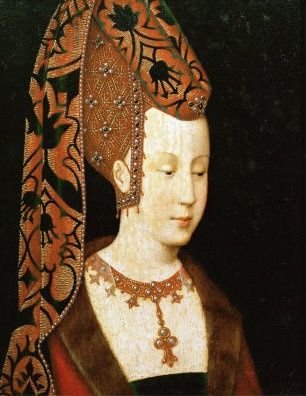
A scandalous and forbidden marriage, triumphing over witchcraft charges, and the mother of a queen? Yes, and more. Meet Jacquetta of Luxembourg.
A Badass Background
Born about 1415, probably in the area that is now Luxembourg, Jacquetta was the eldest daughter of Peter I of Luxembourg, Count of St. Pol, Conversano, and Brienne, and his wife, Margaret of Baux. Though not a native of England, the land that would become her home, she was descended from English royalty on both sides of her family.
Jacquetta's paternal great-grandmother was a descendant of England's King Henry III, and her maternal grandmother was a descendant of England's King John (of Robin Hood fame). This illustrious royal lineage, as well as other lines in her family that went into European royalty, made her a perfect match for the uncle of England's King Henry VI.
That came later, though. Born during the 100 Years War between England and France, Jacquetta spent much time in France with her uncle on her father's side, John II of Luxembourg. John was the head of the military company that captured Joan of Arc, keeping her at his castle for months before selling her to the English, who later executed her on charges of witchcraft.
While there is no proof, there is much speculation that Jacquetta's extensive time spent with her uncle as a child may have brought her into contact with the famed Joan of Arc during Joan's captivity at Jacquetta's uncle's castle. Her supposed acquaintance with Joan may have formed some of Jacquetta's later opinions about royalty and politics, as well as influenced the decisions she made to protect and elevate her family once she had children.
Jacquetta's First Marriage
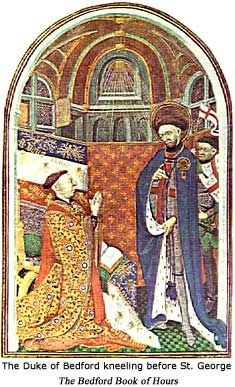
At the age of 17, Jacquetta was married to John of Lancaster, 1st Duke of Bedford of England, in a marriage arranged by her parents. It was an illustrious marriage for Jacquetta, as John was the third son of King Henry IV of England, and, at the time of their marriage, was one of a handful of regents acting on behalf of the child-king Henry VI. As the king's uncle, John was the most powerful man in England at the time, since the king was still just a child. By marrying John, Jacquetta became the highest ranking lady in England, by virtue of the king having no wife.
John had been married before, and was interested in companionship, rather than producing an heir. His first marriage was also childless, but his powerful position in England was secure, and he had an illegitimate daughter who married a high ranking man and had a son.
The marriage seemed happy enough. Very few records were left regarding it. And, John died after only being married to Jacquetta for two years. In addition to being a young, beautiful, and powerful widow at age 19, she also inherited one-third of John's estates (as her customary widow's share in England at the time), and got to retain the title of Duchess, which she received through her marriage to him. Dukes and Duchesses were second in rank only to the royal family, and she legally used the title Duchess Jacquetta for the rest of her life.
Jacquetta's Controversial and Scandalous Second Marriage

(Sir Richard Woodville, Jacquetta's 2nd husband)
Nineteen year olds are impetuous and impulsive in any century, and Jacquetta was no different. During her marriage to John, she became acquainted with his chamberlain, Richard Woodville, and may have even fallen in love with him while John was still alive. There is no question the two were in love after John died, because they married in secret.
The problem with Jacquetta and Richard marrying in secret (around 1437) was that they did so without permission from the boy king. Because the king's own mother, Catherine of Valois, was also a young widow who made a secret and scandalous marriage to a squire, Owen Tudor, after the death of the king's father, King Henry V (when her son by him was only nine months old), there was now a law requiring all ladies related to the royal family by blood or marriage to get the king's permission before marrying. Jacquetta and Richard ignored it.
At first, it was an issue with the king, who, though a boy, was mad. He took away Jacquetta's dower lands, and refused to see her or Richard. However, after the young couple paid a 1,000 pound fine, the king was mollified, and welcomed Jacquetta back to court. He always did have a lot of love for his aunt-by-marriage. He even gave her the dower lands back, and made Richard a knight, since a Duchess required a husband with some kind of title.
About 11 years later, in 1448, Jacquetta even convinced the king to make Richard a baron. Richard Woodville became known as Baron Rivers, elevating all 14 of the children he and Jacquetta had together to the English nobility.
Jacquetta and the Wars of the Roses
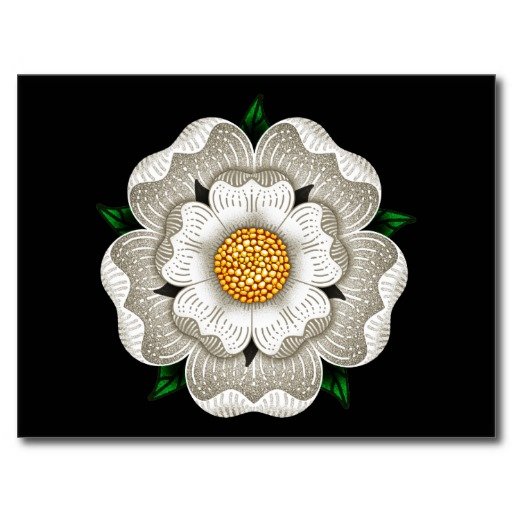
Because Jacquetta was a member of the royal family, she enjoyed close access to the king, as well as many special privileges. When her nephew married Margaret of Anjou in 1445, Jacquetta lost her position as first lady in England, but she was still second lady, and second only to the new queen.
Jacquetta and Queen Margaret developed a close, special friendship, and when the Wars of the Roses broke out between those loyal to Henry VI (now an adult) and Queen Margaret and those loyal to Henry VI's cousin, the Duke of York, Jacquetta and Richard remained firmly on the side of the king and queen. They were family, after all. Richard even fought in some of the initial battles of the war, and won or helped win some Lancastrian victories for the royal family.
Jacquetta and Richard even married their eldest child and daughter, Elizabeth Woodville, to a knight in a prominent Lancastrian family, the Greys. With her new husband, Sir John Grey, Elizabeth bore Jacquetta and Richard their first two grandchildren, Thomas and Richard Grey.
It was only when John Grey was killed in battle, leaving Elizabeth a widow, that things started to change for Jacquetta and Richard.
Jacquetta Changes Sides
While Jacquetta loved her nephew the king, and was close friends with the queen, her first loyalty was always to her husband and children. Three years after John Grey was killed, the king and queen were overthrown by York forces, and the now-deceased Duke of York's eldest son, Edward, was crowned King of England as Edward IV.
Elizabeth was still trying to get her mother-in-law to release the inheritance of land and property that rightfully belonged to her sons after John Grey was killed. Eventually, Elizabeth decided to petition the new king for the release of these lands. Described as the most beautiful woman in England at the time, it is not really surprising that Edward IV fell in love with this young widow, who was five years older than him. Elizabeth refused to be his mistress, so he married her in a secret ceremony witnessed only by Jacquetta, the priest who married them, and a choir boy who sang at the ceremony.
Jacquetta's daughter was now the Queen of England, though it wasn't announced publicly for a few more months. Though she was married to a York king, when the Yorks had been Jacquetta's sworn enemies for years at this point, Jacquetta knew she had to support her daughter.
Jacquetta and Richard abandoned their support of Henry VI, who was held captive by Yorkist forces, and turned their backs on Margaret of Anjou, who fled with her son to Scotland. Jacquetta and her family were Yorks now, and Jacquetta herself was the Queen Mother.
Jacquetta is Accused of Witchcraft
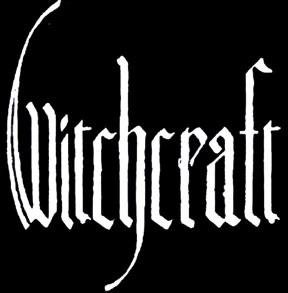
Just because a new king and queen were on the throne did not mean the Wars of the Roses were over. In fact, Edward IV's marriage to Elizabeth Woodville was unpopular with many of his high-ranking relatives, who thought marrying the daughter of a commoner (on Richard's side, ignoring Jacquetta's royal heritage) and an English subject was beneath him. They wanted him to marry a foreign princess and forge an alliance. When Edward IV refused to annul the marriage, members of the York family broke off from him and tried to put his younger brother, George, on the throne.
This led to more battles, both between Lancastrians and Yorists, and within the York faction itself. It was during one of these battles that Edward IV's cousin, Richard Neville, took Richard Woodville and his oldest son, John, captive and executed them without a trial. Jacquetta's husband and eldest surviving son were gone (she had another son, Lewis, who was her eldest born son, but he died of a fever at the age of 12).
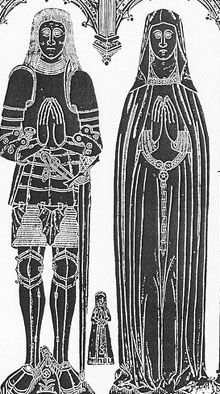
(ancient rubbings of funeral effigies of Richard Woodville and Jacquetta of Luxembourg, from now long-vanished tombs)
Eventually, Richard Neville drove Edward IV from the throne and Elizabeth and her children into sanctuary at Westminster Abbey. He abandoned putting George on the throne for lack of support, and became a Lancastrian, working to restore Henry VI and Margaret of Anjou. He managed to accomplish this, for a brief time.
It was during the very brief restoration of Henry VI that Jacquetta was brought up on witchcraft charges.
Richard Neville brought in a man named Thomas Wake who said he found a lead image of a man, which was broken in the middle and held together with wire, which he found on Jacquetta's estate. He also claimed he knew another man who had seen Jacquetta in possession of two other lead images of Edward IV and Elizabeth. It was believed she used these images to make Edward IV fall in love with Elizabeth and elevate Jaquetta's family to the throne.
Before the case could get much traction, however, Edward IV came back with an army and took the throne back from Henry VI for good. Henry VI was killed in the Tower of London the same day Edward IV re-took the throne, and Margaret of Anjou was kept there as a prisoner for years, until her French relatives ransomed her (the son she shared with Henry VI was killed in battle, leaving them with no heirs). Edward IV dismissed the charges against his mother-in-law.
Fourteen years later, after the unexpected death of Edward IV at a relatively young age, his brother, Richard III, declared his marriage to Elizabeth Woodville to be invalid and all their children bastards who were ineligible for the throne, then had himself declared king. In making his case as to why the marriage of Edward and Elizabeth was invalid, Richard brought up the charges of witchcraft against the long-dead Jacquetta, saying she and Elizabeth both used witchcraft to bring about the marriage of Elizabeth to the king. Since he had no proof of this, however, Richard eventually abandoned those claims and used Edward IV's supposed engagement to another woman at the time of his marriage to Elizabeth....which, in medieval times, was just as good as an actual marriage....to invalidate the couple's union.
Jacquetta's Legacy

(Effigy of Elizabeth of York, Jacquetta's granddaughter, made from a mask used at her funeral in 1502. Through Elizabeth, Jacquetta is a direct ancestor of every British monarch to the present day.)
Jacquetta died May 30, 1472, about three years after her husband was wrongfully and illegally executed by Richard Neville, who did not have the authority to do so. She was around fifty-six years old. She left behind a large family of 12 surviving children out of 14, and numerous grandchildren.
One of those grandchildren, the eldest daughter of Elizabeth and Edward IV, married the conquering Henry Tudor and became Elizabeth of York, Queen of England. Elizabeth of York and Henry VII Tudor's daughter, Margaret Tudor, became queen of Scotland. After the century and a quarter reign of the Tudors, the crown of England went to Margaret's great-grandson, James VI of Scotland, who the became James I of England. All of the monarchs of England since then have been descended from this line.
Because Margaret Tudor was Jacquetta's great-granddaughter, this means that every English monarch to sit on the throne from the moment Jacquetta's daughter Elizabeth became queen, is a direct descendant of Jacquetta, including the present Queen Elizabeth II of the United Kingdom.
Jacquetta was not only badass and daring in her own time, throwing conventions to the side for love, and tossing close alliances out the window for her family, and even weathering witchcraft accusations at a time when most women did not survive them, she was also badass in another way. She founded a line of kings and queens of England (and later, the UK) that has remained unbroken for more than five centuries.
Her direct descendants are on the throne today precisely because Jacquetta was a badass woman of history.
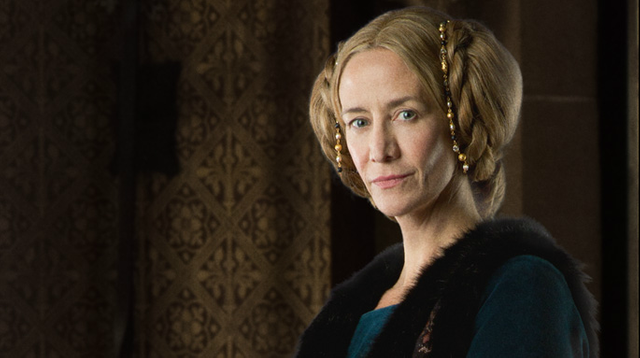
(Janet McTeer as Jacquetta of Luxembourg in the 2013 BBC/Starz miniseries, The White Queen, based on the life of Jacquetta's daughter, Queen Elizabeth Woodville.)
If you enjoyed this post (and I hope you did), please take a moment to follow me here at @stephmckenzie to get more articles from me on life, the universe, and everything. Thank you!
Love the name "jacquetta" certainly sounds baddass :-) thanks for some cool new reading. Have not read about her before. Sarah
This post received a 3.7% upvote from @randowhale thanks to @stephmckenzie! For more information, click here!
Thanks, @randowhale. :)